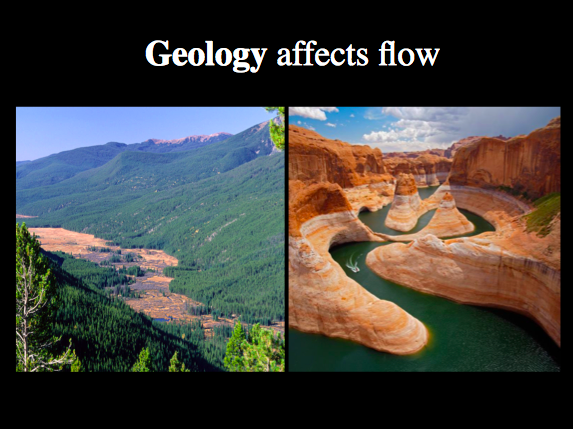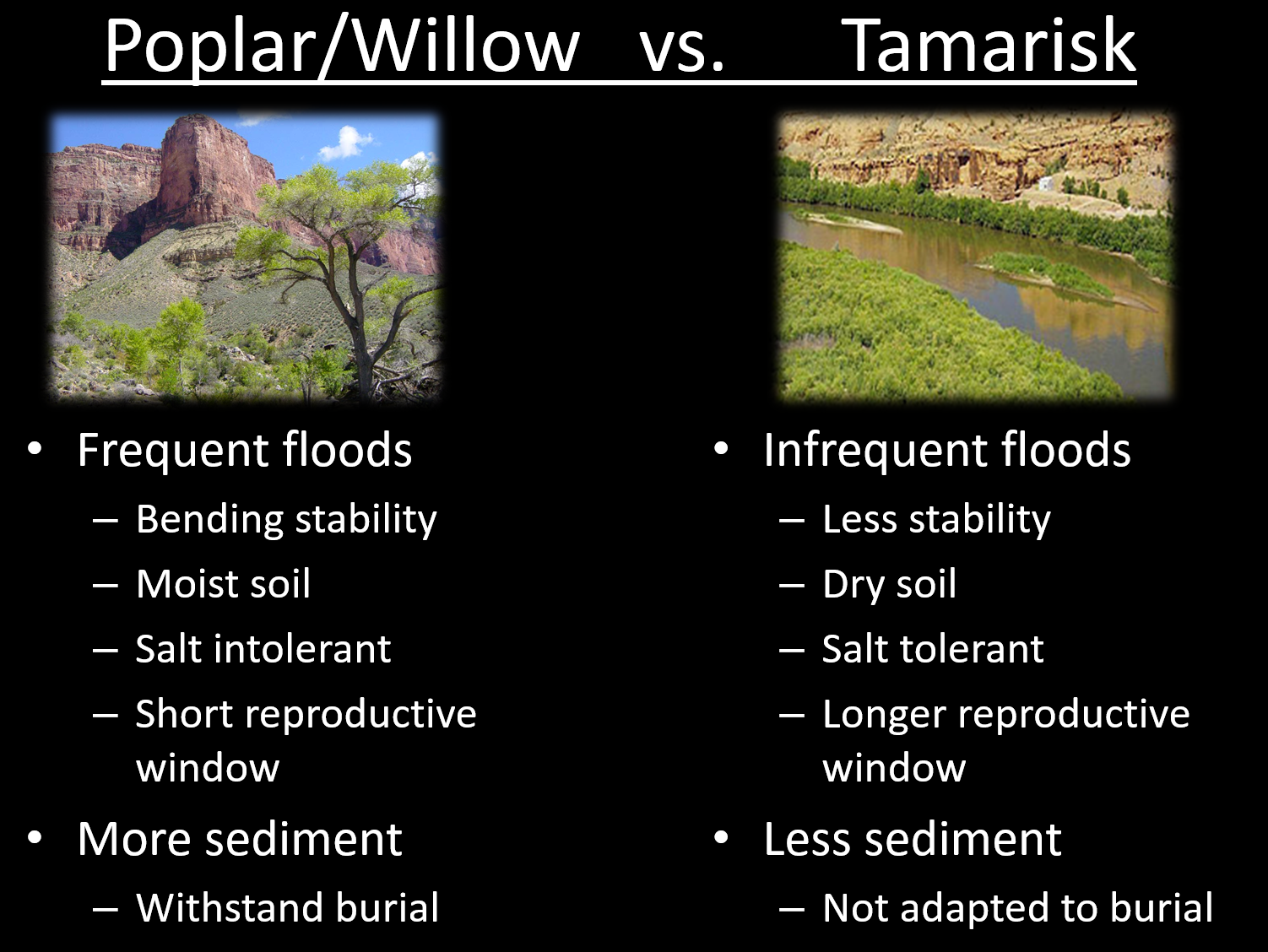Have you ever walked or driven along a river and wondered why there was thick, lush vegetation flanking the banks of one stretch of the river, and a seemingly barren wasteland of streambanks just 10s or 100s of yards downstream? Have you ever wondered if the river looked like it does before that big dam was built upstream? As Erin Satterthwaite described in her presentation, Grow with the Flow – How flow affects biology and biology affects flow, many of these details involve the complex interactions between river systems and their biology, at both the micro and macro scale.
Water in motion is a powerful force, and it is the main factor that shapes river systems. Flow varies dramatically in space and time, and is dependent on the climate and source of flow, the geology, and the topography inherent to a particular stream or river system. Differing rock types affect the flow geometry at both large and small scales. Soft, friable rock types are easily erodible, often forming wide, meandering channels with abundant cobble bars and sand terraces, while durable rock types typically form narrow channels, deep pools, and rapids (Fig. 1). Similarly, topographic controls can also create flat and steep gradients that have similar effects, respectively. All systems are also dependent on the climate, which dictates the temporal variation of flow. Flashy, flood-prone streams have a much different stream morphology than more moderated streams. Of course, the influence of dams can greatly moderate the flows of even the largest and most flood-prone rivers, like in the Grand Canyon.

Climate, geology, and topography affect the flow of a stream. The flow, in turn, strongly influences the type of biota in and around the stream. At the micro scale, flow affects the dispersal of stream organisms that can be carried downstream by the current. For example, flood flows can disperse seeds onto adjacent floodplains, initiating a cycle of vegetation recruitment, establishment, and succession based on the frequency and magnitude of these flood events. Flows transfer and distribute resources like sediment and nutrients. The amount of sediment in the water column strongly affects the clarity of the water. In murky, sediment-rich streams, the macro-biota like fish often rely strongly on olfactory cues for feeding, while fish in clear streams are often more visually oriented.
Formation of important habitat features like pool and riffle sequences is dependent on specific flow and sediment transport characteristics. These features create benthic habitat and spawning areas for fish. Even small perturbations in the flow and sediment transport characteristics can impair the habitat characteristics of these features. Changes in flow regimes, like in the Grand Canyon after the construction of Glen Canyon Dam, have been shown to have drastic impacts on the ecology of the river. For example, Glen Canyon Dam moderated flood flows and reduced sediment input to the Grand Canyon. These changes resulted in a large increase in invasive species recruitment (i.e., Tamarisk) along the river, replacing much of the native species like Poplar and Willow. Willow can withstand frequent flooding and burial; conditions that were common prior to dam construction. Tamarisk, on the other hand, prefers infrequent flooding and is not adapted to burial. A similar story can be told for some fish species in the Grand Canyon (Fig. 2). Humpback chub, native to the Grand Canyon, prefers sediment-rich, warm water. With the construction of the dam, these conditions have changed to colder, clearer water; conditions preferred by non-native rainbow trout. As a result, rainbow trout numbers have grown and humpback chub numbers have dropped dramatically in the canyon since construction of the dam.

The idea that flow affects biology and the reciprocal, that biology affects flow, is termed biogeomorphology. This emerging field is especially valuable to help understand how altering the flow of a stream or river (e.g., with a dam) affects the resulting biota, and how a change in biota can also change the shape of the river. Next time you find yourself observing a river and wondering about the interactions between the ecology and flows that you see, consider this concept of biogeomorphology.
